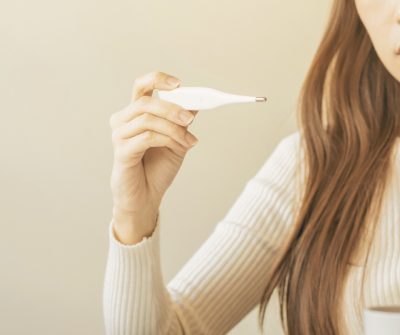Basal Body Temperature (BBT) Charting and Chinese Medicine in Brisbane

For any woman who experiences gynaecological or hormonal issues or wants to conceive, charting your Basal Body Temperature (BBT) is a great place to start. A regular menstrual cycle shows that your body is in a healthy balance and produces the right levels of hormones at the right time.
The Bright Side Family Acupuncture is a provider of holistic health care including acupuncture, tui na Chinese massage, herbal therapy, cupping and moxibustion, dietary and lifestyle advice in Brisbane North, with clinic rooms in Wilston and Bowen Hills. We have developed a special interest in women’s health and paediatrics and are proud to accompany whole families on their health journey.
What is the BBT?
Per definition, the Basal body temperature (BBT) is the lowest natural body temperature after a period of rest (1) and can be used to define the time of ovulation. A spike of basal body temperature is expected to take place right after ovulation (2) initiated by the release of hormone progesterone.
What temperature changes should you expect?
The average body temperature is 36.5 degrees over the course of a 28 day cycle.Before you ovulate, probably day 13 or 14, your temperature will likely drop to 36.2 degrees. Once you ovulate, your temperature will rise to about 37 degrees and stay there until just before you have your period.
What can a Chinese medicine practitioner learn from your BBT chart?
In Chinese medicine, we look at your menstrual cycle in terms of Yin and Yang which correlate with the hormonal changes that occur during the menstrual cycle. Based on your BBT chart, we can identify which phase of your menstrual cycle needs support. The chart may also reveal potential lifestyle factors that influence your hormones and may need to be addressed. BBT charts can vary in their complexity: We will help you understand your BBT chart and we will use it to guide our treatment strategy.
How to fill in your BBT chart!
Upon waking, before you get up, take your temperature. Put the thermometer under your tongue. A regular thermometer is perfectly fine. Take the temperature around the same time each morning (+/-), when you wake up the first time and when you are STILL IN BED!
Day 1 marks the first day of your period. You can start the process of charting on any day of your cycle, just mark it in the appropriate field in the chart.
If you do not have a period or it is very irregular, start your charting on day 1 and keep going until a pattern emerges.
What other changes occur during the cycle and ovulation?
The chart also asks you for changes in your cervical mucus (CM), a fluid produced by the cervix. The cervical mucus changes during your cycle from being scant and thick to clear and slippery, right before you ovulate. This consistency helps the sperm to easily swim and meet the egg at ovulation. If you want to conceive, this is the time to have intercourse. Ideally, you have intercourse every second day during the fertile phase as this helps the sperm production, numbers and motility.
Dry & sticky (day 1-6)
Creamy (day 7-9)
Wet & clear (day 10-12)
Egg white (day 13-14)
Things that may change/disrupt the readings:
- Alcohol
- Sickness
- Stress
- Travel
- Medications
How long do you need to chart?
It may be necessary to track your BBT for about three months to identify a reliable pattern.
How is BBT charting helpful?
It is a great way to become more aware of your fertile window and your hormonal cycle and helps the practitioner to identify the best treatment strategy. It can feel very empowering as you can actively contribute to your chances of conception. In some cases though, charting and timing intercourse can add to the stress you may experience during your fertility journey. Please always talk to your practitioner about the process of charting and any challenges you are facing.
Do you have more questions?
Get in touch with our reception to schedule a free phone call in which we identify the next possible steps for you and how acupuncture, tui na massage, diet and lifestyle may support you on your health journey. We at The Bright Side Family Acupuncture would love to support you and your family on your health journey!
References
(1) Steward K, Raja A. Physiology, Ovulation And Basal Body Temperature. [Updated 2022 Jul 18]. In: StatPearls [Internet]. Treasure Island (FL): StatPearls Publishing; 2023 Jan-. Available from: https://www.ncbi.nlm.nih.gov/books/NBK546686/
(2) Su HW, Yi YC, Wei TY, Chang TC, Cheng CM. Detection of ovulation, a review of currently available methods. Bioeng Transl Med. 2017 May 16;2(3):238-246. https://www.ncbi.nlm.nih.gov/pmc/articles/PMC5689497/


